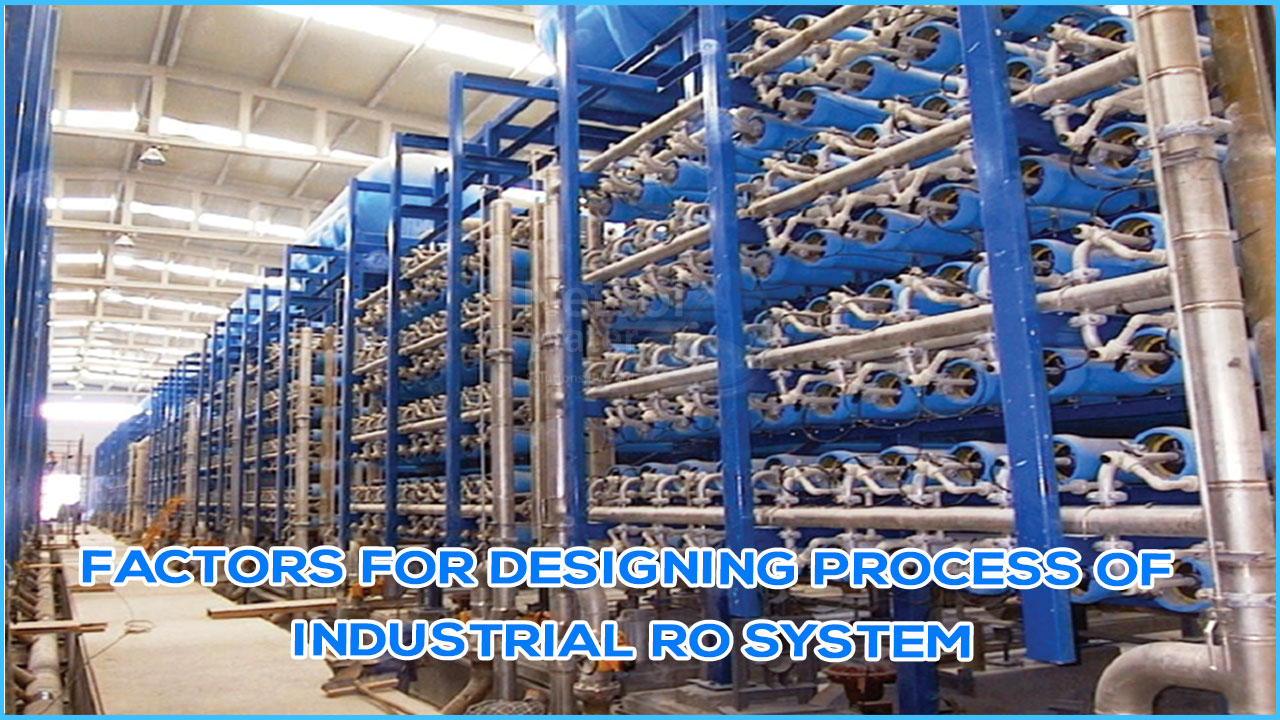FACTORS FOR DESIGNING PROCESS OF INDUSTRIAL RO SYSTEM
For an Industrial RO system to operate at maximum efficiency, several factors must be taken into consideration during the design process:
I. Water Source: By pre-treating the feed-water, toxins that would scale or foul the membranes in a reverse osmosis system can be removed.
II. Temperature and Flow Rate: The temperature of the water has a significant impact on the flux rate, or the rate at which water flows through a membrane. Temperature and flow rate characteristics must be considered when designing a reverse osmosis system and pretreatment equipment.
III. Pretreatment: To prevent scaling from calcium and magnesium carbonates, feed-water should be prepared with a caution exchange water softener or chemical antiscalant, depending on the water hardness level.
IV. Silt Density Index: To avoid inefficiency and downtime, feed-water should be evaluated in the field using a silt density index test (SDI) before designing pre-treatment for reverse osmosis systems. If the feed-water contains significant amounts of silt, flocculent treatment upstream of multimedia filtration may be required.
TYPES OF MEMBRANES IN INDUSTRIAL REVERSE OSMOSIS
Isotropic and Anisotropic Membranes are 2 types of membranes in Industrial Reverse Osmosis.
Isotropic membranes are composed of the same materials and have the same physical properties across their entire cross-section.
Anisotropic membranes have non-uniform layers that differ in structure or chemical composition across the membrane cross-section.
A multimedia pre-filter, water softener or anti-scalant dosing system, de-chlorination dosing system, reverse osmosis unit with semi-permeable membranes, and UV sterilizers or post chlorination as a post treatment is all included in an industrial reverse osmosis plant. The reverse osmosis technology is used in these RO machines, which carry feed water via a multimedia pre-filter to eliminate particles larger than 10-micron. The water is then injected with an anti-scalant chemical to prevent hardness fouling, which could damage the RO machine's membranes. Hardness, chlorine, smells, color, iron, and sulphur can all be removed with these pretreatment choices.
The water is then routed through a reverse osmosis unit, where a high-pressure pump applies intense pressure to the highly concentrated solution, separating the remaining salts, minerals, and pollutants that the pre-filter did not capture. The membrane's low-pressure end produces drinkable water, while the high-pressure end discharges salts, minerals, and other contaminants into a drain.



